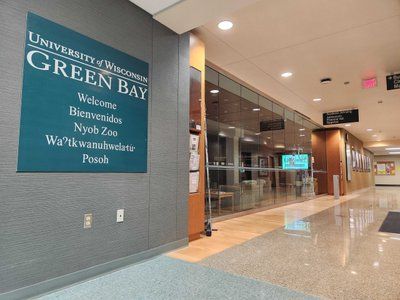The announced move of Kestrel Aircraft Corp. to Superior, Wis., may strike some skeptics as a curious landing strip for a company in the business of making small passenger planes. Don’t bail out on this story just yet. Wisconsin has more air and space credibility than meets the eye.
While more than 60 percent of the nation’s aerospace jobs are clustered in six states – Washington, California, Texas, Kansas, Connecticut and Arizona – Wisconsin can stake claim to a small but growing aerospace industry.
Those assets range from university-based space research in Madison to the world-renowned Air Venture in Oshkosh to commercial manufacturers such as Gulfstream, a General Dynamics subsidiary with a plant in Appleton.
The newest addition to Wisconsin’s aerospace cluster is Kestrel, which will move its headquarters and production from Brunswick, Maine, to Superior. The company already has engineering and design offices just across the border in Duluth, Minn. Gov. Scott Walker and other state and local officials announced this week that Kestrel, lured by a mix of tax credits and loans, will create 600 jobs by 2016 through production of single-engine turboprop planes that seat six to eight passengers.
If Kestrel’s projections are correct, it will gradually boost Wisconsin aerospace exports that totaled $245.6 million in 2010, according to the state Department of Revenue. That $245.6 million represented 13.8 percent of all exports in the transportation equipment category, which was Wisconsin’s third-largest export sector in 2010.
While there are no Boeing or Bombardier assembly plants in Wisconsin, there are many Wisconsin-based suppliers of those major aerospace companies and more. In fact, some 140 suppliers in Wisconsin work with Boeing. DeltaHawk Engines has a plant in Racine and Morgan Aircraft has announced plans to build a production facility in Sheboygan.
The state is also the location for one of the world’s largest air shows, AirVenture, which attracts about 500,000 people from 60 nations each summer to Wittman Regional Airport in Oshkosh, home to the Experimental Aircraft Association.
The state’s aerospace research base has global credentials. The UW-Madison Cooperative Institute for Meteorological Satellite Studies is the leading source of satellite weather data in the world. The National Oceanic and Atmospheric Administration recently renewed a $60 million contract with the institute.
The UW-Madison is also home to the Ice Cube Project. Completed in late 2010 at the South Pole, IceCube is the world’s largest neutrino observatory. It was built at the cost of $271 million over 10 years to find extremely high-energy neutrinos – tiny subatomic particles – originating from supernova explosions, gamma-ray bursts and black holes. Scientists believe it will greatly expand knowledge of astrophysics and “dark matter.”
The UW-Madison College of Engineering has longstanding ties into NASA and space exploration, including its Wisconsin Center for Space Automation and Robotics and its work around development of Helium-3 energy technologies. The campus also has a Space Science and Engineering Center as well as a highly-rated astronomy department.
Researchers at UW-Stout have worked on the design and manufacture of functional clothing that has aerospace applications; researchers at UW-Oshkosh have developed a propellant for rocket fuels to increase the speed and efficiency of the fuel’s burn; researchers at UW-Platteville and Oshkosh have developed nano-materials that can help with conductivity and weight issues; and researchers at UW-Milwaukee are engaged in work around composites, sensors, gravitational-wave physics and more.
A successful private contractor with NASA is Orbital Technologies Corp., Madison, which was awarded more than $150 million in grants and contracts in its first 20 years. It’s a prime example of R&D yielding products and jobs.
As it prepares to land in Superior, Kestrel Aircraft Corp. need not feel like Charles Lindbergh on the first successful trans-Atlantic flight in 1927. The company is not flying solo in a state that knows its way around the air and space industry.
Still is president of the Wisconsin Technology Council. He is the former associate editor of the Wisconsin State Journal.





